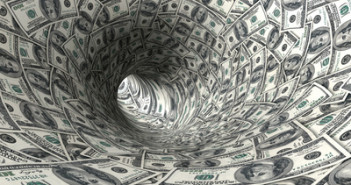Since the financial crisis erupted in 2008, the trading themes of “risk aversion” versus “risk appetite” have been dominant for quite some time. Things are slowly starting to get back to normal, yet the flows towards safe havens still happens, and sometimes violently.
The safe haven currencies are also undergoing a shift. Here’s an overview of currencies that are or were in the safe haven camp.
A gradual shift from risk to normality
In turbulent times, reaction to US figures was counter intuitive: weak US indicators would trigger a run into safe havens, including the dollar, while strong US figures would weaken the safe havens.
This is the risk factor discussed many times and explained here.
The improving conditions in the US over time have made a rate hike something that is already in closer to the present, and not beyond the horizon. The recent FOMC Statement discussed a pick up in inflation, and a rate hike before “late 2014” seems more real.
This changed the reaction to US indicators, which is now more normal – stronger figures are usually helping the dollar, while weaker ones are hurting it.
Safe Havens
Nevertheless, if US indicators soften too much, or the situation in Europe deteriorates too quickly, the flow to safe havens occurs once again.
Apart from the US dollar, there are other safe haven currencies, but their importance is changing:
- Japanese yen: The yen emerged as a safe haven, low yielding currency during the financial crisis. Also here, the central bank has intervened, but with very limited success. Another factor that endangers the status of the yen is the downwards change in the Japanese trade balance. Nevertheless, the yen is still a safe haven.
- Swiss franc: This is the classic safe haven currency, enjoying a strong reputation. However, the tables have definitely turned – since the SNB introduced its 1.20 floor on EUR/CHF, the franc is not so safe anymore. The SNB guards it strongly and keeps the option to raise the floor. When the SNB will change its policy, the franc will likely return to its classic position.
- British pound: Sterling is far from being a natural haven, especially as the economy is struggling. It’s strength comes from the weakness of others, especially the euro-zone. British bonds become attractive as the British government’s deficit cutting policy outshines the European debt crisis. This status seems related to the debt crisis and will likely disappear when the crisis disappears. That may take a long time though.
- Canadian dollar: At some point, the Canadian dollar seemed like a safe haven currency, with countries such as Russia diversifying funds into the loonie. It might still gain this position, but for now, the strength of the loonie is more related to domestic and US strength rather than safe haven flows.
Further reading: 5 Most Predictable Currency Pairs – Q2 2012
